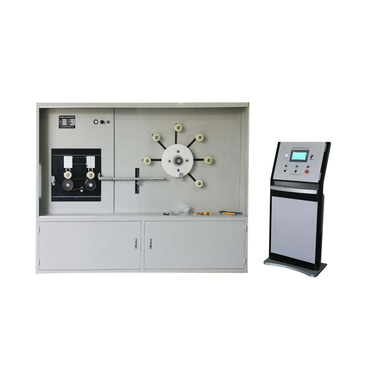Ultraviolet Irradiation Polyolefin Cross-Linked Machine - Advanced Cross-Linking Technology
Ultraviolet Irradiation in Polyolefin Cross-Linking A Technological Advancement
Ultraviolet (UV) irradiation has emerged as a transformative technology in the field of polymer processing, particularly in the cross-linking of polyolefins. Polyolefins, such as polyethylene and polypropylene, are widely used plastics known for their versatility and durability. However, enhancing their performance through cross-linking has become increasingly important in various industrial applications, leading to significant advancements in methodologies, one of which is UV irradiation.
Cross-linking polyolefins through UV irradiation involves exposing the polymer to ultraviolet light, which induces photochemical reactions. These reactions create a network of bonds between polymer chains, resulting in a three-dimensional structure that imparts improved thermal stability, chemical resistance, and mechanical strength to the material. The process can be finely tuned by adjusting the intensity and duration of UV exposure, making it a highly controllable and efficient method for enhancing polyolefin properties.
One of the key advantages of UV irradiation is its ability to initiate cross-linking at ambient temperatures, which is a significant improvement over traditional methods that often require high temperatures or the use of chemical cross-linking agents. This characteristic not only reduces energy consumption but also minimizes the degradation of the polymer, preserving its desirable attributes. Furthermore, UV cross-linking is a solvent-free process, aligning with growing environmental demands for sustainable manufacturing practices.
ultraviolet irradiation polyolefin cross-linked machine

The applications of UV-cross-linked polyolefins are vast. In the automotive industry, these materials are increasingly used for components that require superior resistance to heat and chemicals. Electrical insulation, packaging materials, and even medical devices benefit from the enhanced properties of UV-cross-linked polyolefins. Moreover, the technology has found its way into the production of durable coatings and adhesives that offer increased performance and longevity.
Despite the numerous benefits, challenges remain in the broad adoption of UV irradiation for polyolefin cross-linking. One concern is the uniformity of curing, as achieving consistent cross-link density across complex geometries can be difficult. Additionally, the development of suitable photoinitiators—compounds that absorb UV light and initiate the cross-linking process—remains a critical area of research. Effective photoinitiators must balance reactivity with thermal stability to ensure that they perform well under operational conditions.
In conclusion, ultraviolet irradiation represents a promising approach to cross-linking polyolefins, allowing for enhanced material properties while promoting energy efficiency and sustainability. As research continues to address existing challenges, the adoption of this technology is likely to expand, contributing to the development of advanced polyolefin materials that meet the demands of various industries. As we look to the future, UV irradiation stands out as a key player in the evolution of polymer science, driving innovation and improving the performance of one of the most widely used materials in modern life.
-
Why the Conductor Resistance Constant Temperature Measurement Machine Redefines Precision
NewsJun.20,2025
-
Reliable Testing Starts Here: Why the High Insulation Resistance Measuring Instrument Is a Must-Have
NewsJun.20,2025
-
Flexible Cable Flexing Test Equipment: The Precision Standard for Cable Durability and Performance Testing
NewsJun.20,2025
-
Digital Measurement Projector: Precision Visualization for Modern Manufacturing
NewsJun.20,2025
-
Computer Control Electronic Tensile Tester: Precision and Power for the Modern Metal Industry
NewsJun.20,2025
-
Cable Spark Tester: Your Ultimate Insulation Assurance for Wire and Cable Testing
NewsJun.20,2025
 Copyright © 2025 Hebei Fangyuan Instrument & Equipment Co.,Ltd. All Rights Reserved. Sitemap | Privacy Policy
Copyright © 2025 Hebei Fangyuan Instrument & Equipment Co.,Ltd. All Rights Reserved. Sitemap | Privacy Policy
